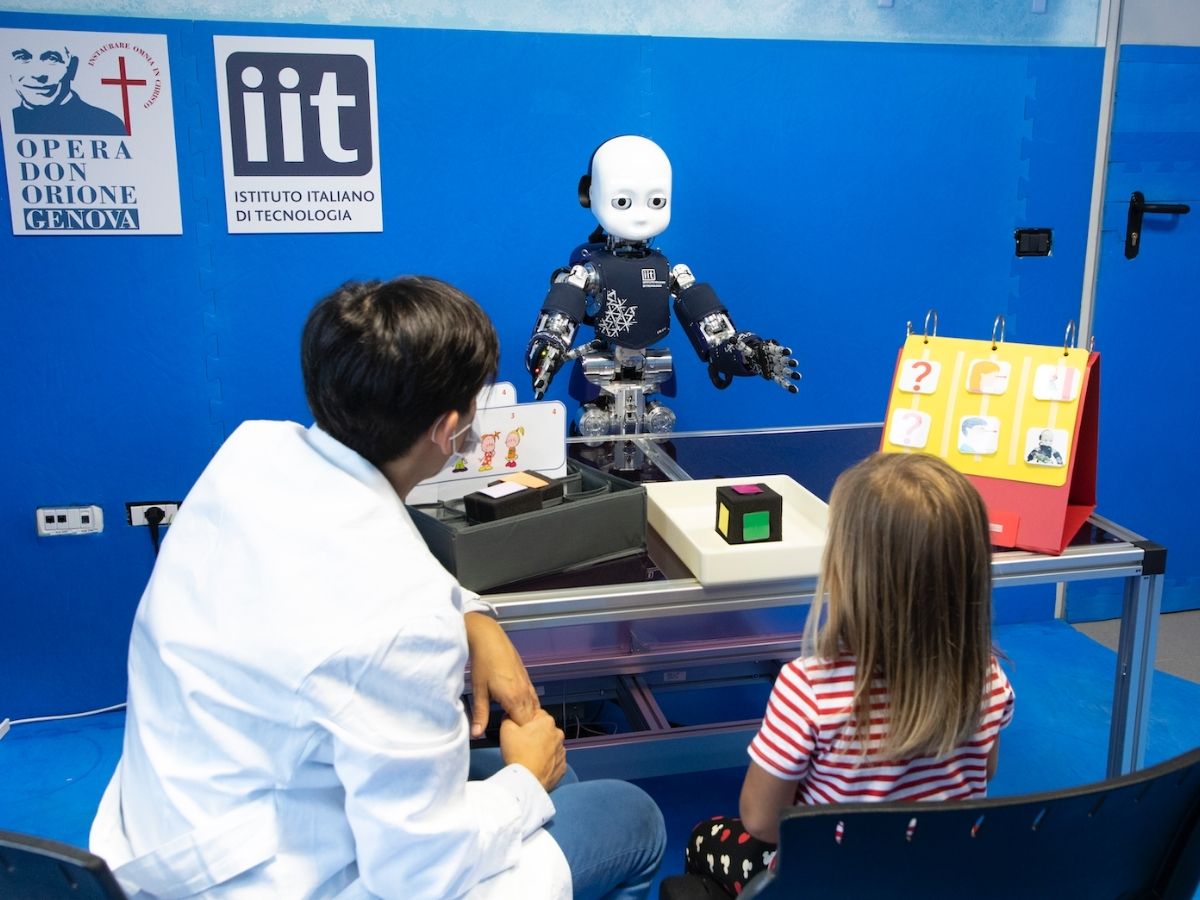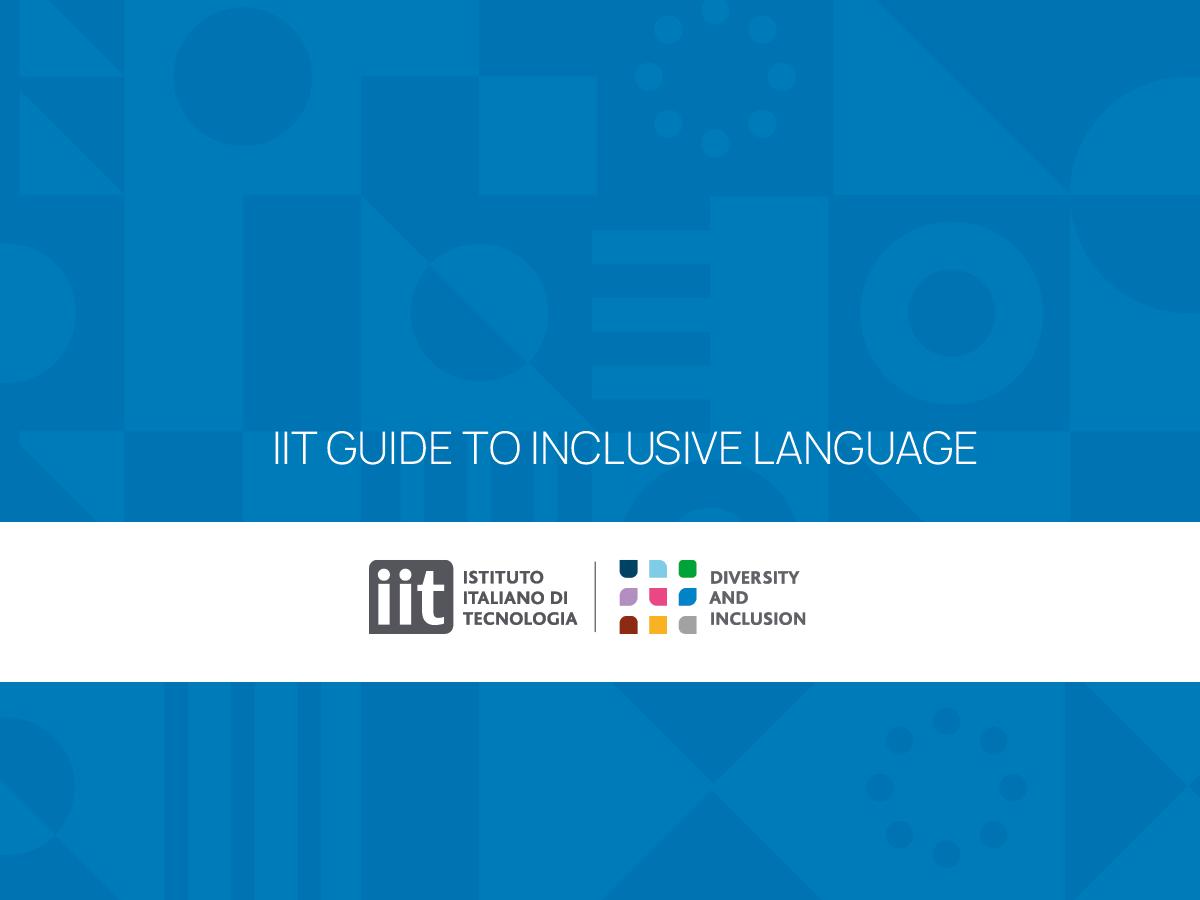For the first time in the world, the IIT’s humanoid robot iCub is part of an experimental therapy in the treatment of autism
For the first time in the world, the humanoid robot iCub, developed and built by researchers at IIT-Istituto Italiano di Tecnologia (Italian Institute of Technology), enters a rehabilitation facility to take part in an experimental therapy to treat cognitive impairments in children with autism spectrum condition. The experimental protocol has been defined by the IIT team “Social Cognition in Human-Robot Interaction”, led by researcher Agnieszka Wykowska, in collaboration with the rehabilitation team of the Boggiano Pico Center-Opera Don Orione in Genova, a healthcare center specialized in the treatment of various neurodevelopmental conditions. The initial therapy phase involves 50 children and it will last until June 2021.
The Autism Spectrum Condition (ASC) is an extremely complex condition that begins in childhood and tends to persist into adolescence and adulthood. It is present in about 1% of the world population. WHO estimated that worldwide one in 160 children has an ASD. There is no known cure for ASC, however specific behavioural treatment can reduce difficulties in communication and social behaviour, with positive impact on people’s quality of life.
IIT and Opera Don Orione’s experimental training protocol was born from the idea of combining research and the most advanced technology for being at service of children and their families in a clinical context. The protocol reflects a multidisciplinary approach for understanding and treating ASC, where clinicians and researchers collaborated in order to introduce the use of humanoid robot iCub in the therapeutic path of children with ASC.
IIT researchers, led by Agnieszka Wykowska, hypothesized that for some ASC children a humanoid robot like iCub might represent an easier counterpart to interact with, relative to another human. This might be because a robot is a “simplified” version of a human and might be less overwhelming in terms of amount of exhibited signals in behavior. A robot can be also much more predictable and stereotypical in behavior – a characteristic quite crucial for children diagnosed with ASC.
“A robot can repeat the same action, in the exact same way numerous times, which would be impossible for a human being” – explains Agnieszka Wykowska, the Coordinator of the Social Cognition in Human-Robot Interaction team of IIT. “Our activity at the the Boggiano Pico Center underlines the importance of multidisciplinarity and the use of new technologies like robotics in clinical context”.
The iCub robot will be used in order to help children to develop skills in perspective-taking, that is to understand the point of view of others. In fact, people with ASC might difficulties in comprehending the spatial perspective of those who are in front of them, and this type of ability is the basis of many other social skills.
Specifically, the training includes a setup consisting of a special table designed by the team of Wykowska and constructed by IIT’s mechanical workshop. The table is equipped with tools to allow interaction between the robot and the child while manipulating objects. The table includes a mobile tray for exchanging objects, a transparent “window” to ensure safe interaction, and foam cubes with different shapes and colours on each face.
“During the training, the iCub robot exchanges one of the foam cubes with the child and observes one of its faces” explains Davide Ghiglino, IIT researcher in Wykowska’s team. “Then the therapist asks the patient which image or colour on the face of the cube, according to him or her, the robot is looking at.”
“In concrete terms, I am perfectly able to describe the position of objects with respect to myself and, consequently, with respect to another person. For those with an autism spectrum condition, this competence may not be so immediate – adds Dr. Federica Floris, psychologist at the Boggiano Pico Center. “Acquiring the ability to process spatial information relating to a different point of view from one’s own, could help to develop skills related to the field of empathy, such as knowledge of one’s emotions, their control, recognition of others’ emotions and management of relationships “- concludes the psychologist.
The Boggiano Pico Center follows about 200 kids and adolescents with various neurodevelopmental conditions, 80 among them have been diagnosed with an autism spectrum condition. The training foresees the involvement of 50 kids in their early childhood, who manifest ASC in a unique way without other neurodevelopmental conditions. In each training session, the iCub robot supports the therapist and is involved in the training to the extent that is adequate to the specific skills of each child. The treatment with the robot is integrated into a therapy involving other interventions on motor, socio-relational and communication abilities, according to national rehabilitation guidelines.
“The goal of the training is to verify the effectiveness of new treatment protocols, integrating the rehabilitation models currently recommended for autism spectrum condition with more specific interventions for social skills. – explains Dr. Tiziana Priolo, child neuropsychiatrist at the Boggiano Pico Center. “In the long term, the prospect is to obtain new tools that support the multidisciplinary team in taking care of children and adolescents. The question we want to answer is: can robots and artificial intelligence become additional tools with which acquire new skills and improve the quality of life of children with autism spectrum condition?”
The goal, in the coming years, is to further develop various training protocols that can help children with autism spectrum condition to improve specific skills.
This collaboration enriches the context of the Center for Human Technologies of the Italian Institute of Technology (CHT-IIT @ Erzelli) which, also thanks to the support of Regione Liguria, was created to connect with the clinical and hospital environments of the territory to transfer the results of fundamental research into real-life contexts leading to concrete effects on people’s wellbeing.
Istituto Italiano di Tecnologia
Istituto Italiano di Tecnologia (IIT – Italian Institute of Technology,) is a scientific research center established by law in 2003 by Italian Ministry of Education, University and Research and Ministry of Economy and Finance, in order to promote excellence in both basic and applied research and to facilitate the economic development at national level. IIT scientific activities started in 2006, they are multidisciplinary and with a very strong approach to technology transfer. IIT staff is of 1700 people, the majority of which (about 81%) is dedicated to research, and an average age of 36 years. About half of the researchers come from abroad: 34% are scientists from more than 50 foreign countries and 16% are Italian researchers who have come back to Italy after a professional experience abroad. IIT has a vast experience in managing and supervising research projects with a portfolio of more than 450 external funded research projects, also financed by EU funding programs and European Research Council (ERC). IIT has produced more than 14500 publications and 294inventions; its research activity led to the creation of 24 spin-offs, with additional 30 under due diligence. Research is carried out in the Central Research laboratory in Genoa (IIT headquarters), in 11 research satellite centers across Italy and in 2 outstations in US. IIT scientific vision is interdisciplinary, based on the concept of “translating evolution into technology”, that is mimicking natural solutions to develop new technologies in the fields of robotics, materials science, and life science. Currently IIT is conducting its new scientific plan (2018-2023) developing four strategic research domains: Robotics, Nanomaterials, Technologies for Life Science, and Computational Sciences. The main goal is to produce technologies that will have a positive impact on some important societal challenges, such as sustainability and the environment, healthcare and aging society, also reflecting the priorities of EU framework programs.





